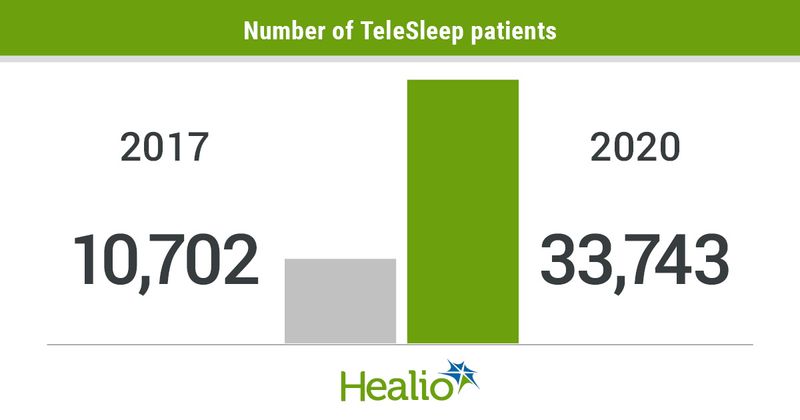TeleSleep program improves access to care for rural veterans
Click Here to Manage Email Alerts
TeleSleep — a telehealth program offered by the Veterans Health Administration Office of Rural Health — improved access to care for sleep-related disorders, researchers reported.
Of the more than 1 million U.S. veterans who have obstructive sleep apnea, 350,000 live in rural areas, according to Kathleen Sarmiento, MD, MPH, the Veterans Health Administration’s national lead for TeleSleep, and colleagues. Rural areas are especially prone to health disparities, including sleep disorders, they said.

TeleSleep has three components: telehealth, home sleep apnea testing (HSAT) and a web application for “comprehensive sleep apnea care” known as the Remote Veterans Apnea Management Platform (REVAMP). The program is offered at a dozen veterans’ health centers and 63 satellite locations in the U.S., according to the researchers.
Data presented at SLEEP showed that in fiscal year 2017, 10,702 patients had sleep encounters within the TeleSleep network. During fiscal year 2020, that number tripled to 33,743.
Results also showed that the number of visits the patients had — either in-person or via telehealth — for sleep-related disorders at TeleSleep sites more than doubled from 2017 to 2020 — from 32,894 to 74,458.
Also, in fiscal year 2020, 72% of veterans who presented at one of the veterans’ health centers or satellite locations where TeleSleep was offered had at least one virtual sleep visit, compared with 53% in fiscal year 2018. The percentage those who had at least one virtual sleep visit in 2020 was significantly higher than at sites that did not offer TeleSleep, where only 64% of patients had virtual visits (P < .001).
In addition, the proportion of veterans who had face-to-face visits — 28% at TeleSleep locations vs. 36% at non-TeleSleep sites (P < .001) — suggests the program was “highly successful in promoting virtual visits,” the researchers said. According to the researchers, visits included in-person care, initial and follow-up virtual visits, electronic consultations and asynchronous telehealth visits — meaning, remote monitoring of positive airway pressure (PAP) data and HSAT — as well as remote PAP initiation and email messages between patients and health care providers.
In an interview with Healio Primary Care, Sarmiento said patient feedback helped to improve the TeleSleep program.

She said health care professionals who want to initiate a program like TeleSleep “should be prepared for an iterative process and cultivate a team that can ride out the ups and downs of program development.”
“Take risks and be creative — some things will stick and be highly successful and others won’t,” she added.

